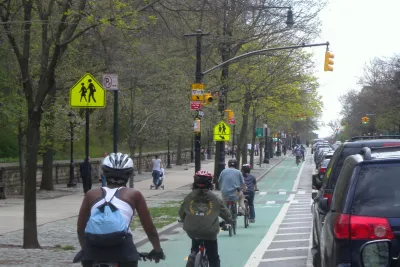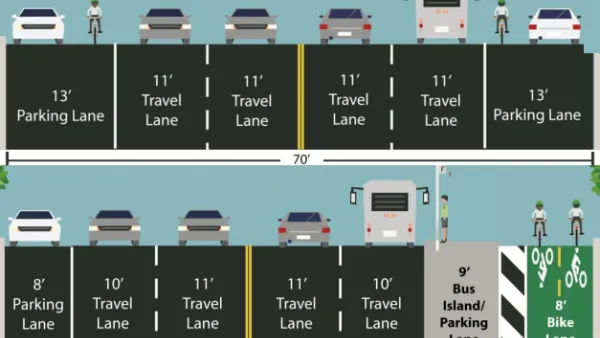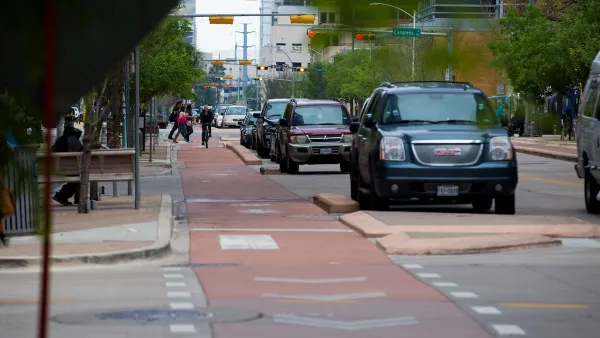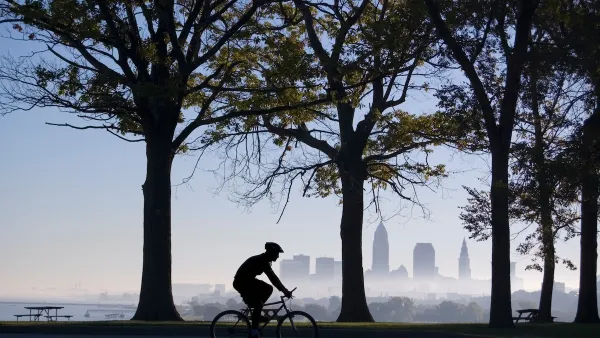While resistance to protected bike lanes can be high, the economic and safety paybacks are substantial.

Matt Kohler takes a closer look at a new video featuring Janette Sadik-Khan, former commissioner of the New York City Department of Transportation, discussing the benefits and challenges of putting in protected bike lanes. Sadik-Khan came on board in 2007, and she describes the biking environment of New York up until that point as dangerous for cyclists.
She was behind the first protected bike lane in the United States, a route on Ninth Avenue in Manhattan, with a design that made the street much safer for bikers. It was a difficult project to implement because parking would be eliminated for the lane and people feared the outcome of that change. “However, reducing the share of road space for cars didn’t usher in the apocalypse, and the protected bicycleway turned out to be a boon for the local economy,” reports Kohler.
In addition, the number of crashes with injuries went down by almost 50 percent and traffic flowed better. Sadik-Kahn says the protected bike lane created a street that is better for all stakeholders – businesses, drivers, cyclists, and pedestrians. Developing safe and reliable networks of bike lanes is one of the best investments that cities can make, she says.
FULL STORY: Video: Protected bikeways make cities safer and boost the economy

National Parks Layoffs Will Cause Communities to Lose Billions
Thousands of essential park workers were laid off this week, just before the busy spring break season.

Retro-silient?: America’s First “Eco-burb,” The Woodlands Turns 50
A master-planned community north of Houston offers lessons on green infrastructure and resilient design, but falls short of its founder’s lofty affordability and walkability goals.

Delivering for America Plan Will Downgrade Mail Service in at Least 49.5 Percent of Zip Codes
Republican and Democrat lawmakers criticize the plan for its disproportionate negative impact on rural communities.

Test News Post 1
This is a summary

Test News Headline 46
Test for the image on the front page.

Balancing Bombs and Butterflies: How the National Guard Protects a Rare Species
The National Guard at Fort Indiantown Gap uses GIS technology and land management strategies to balance military training with conservation efforts, ensuring the survival of the rare eastern regal fritillary butterfly.
Urban Design for Planners 1: Software Tools
This six-course series explores essential urban design concepts using open source software and equips planners with the tools they need to participate fully in the urban design process.
Planning for Universal Design
Learn the tools for implementing Universal Design in planning regulations.
EMC Planning Group, Inc.
Planetizen
Planetizen
Mpact (formerly Rail~Volution)
Great Falls Development Authority, Inc.
HUDs Office of Policy Development and Research
NYU Wagner Graduate School of Public Service





























